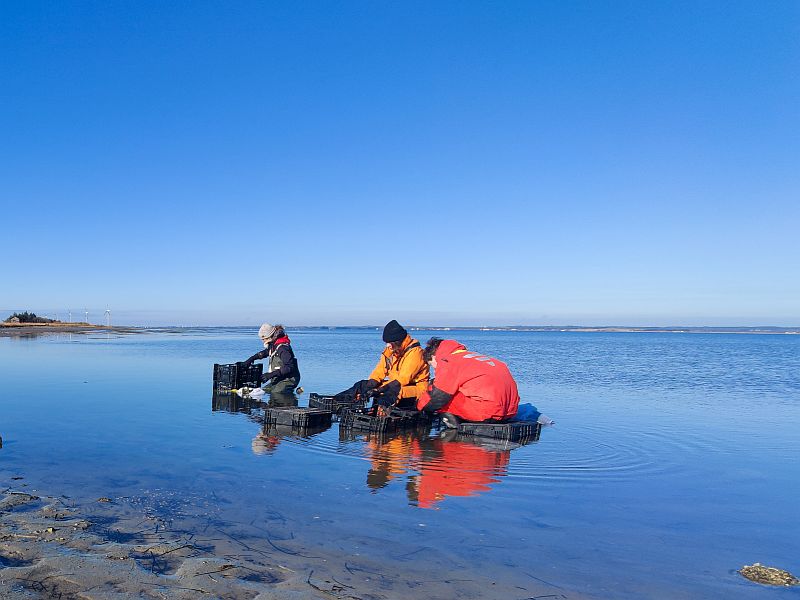Zeegrasplanten verzameld in Denemarken
Voor onderzoek naar het herstel van ondergedoken groot zeegras (Zostera marina) zijn in maart zeegrasplanten verzameld in Denemarken door onderzoekers van de Faculty of Science and Engineering (FSE). De planten worden gebruikt voor experimenten de klimaatkamers en kas van FSE en vervolgens geplant in het Nederlandse deel van de Waddenzee. Met deze experimenten hoopt GELIFES-onderzoeker Katrin Rehlmeyer meer inzicht te krijgen in de optimale omstandigheden voor de herintroductie van ondergedoken groot zeegras.
In het verleden groeide er in de Nederlandse Waddenzee op plekken die permanent onder water staan veel ondergedoken groot zeegras, maar sinds de jaren dertig van de vorige eeuw is het verdwenen. Zeegras wordt beschouwd als sleutelsoort, met een grote invloed op andere soorten en zijn omgeving. Herintroductie van ondergedoken zeegras kan daarom bijdragen aan een rijkere onderwaternatuur in de Nederlandse Waddenzee. Voordat tot een herintroductieplan kan worden overgegaan moet er meer kennis zijn over de factoren die de overlevingskans van de zeegrasplanten bepalen. Rehlmeyer doet daarvoor allerlei experimenten.
Lees het volledige nieuwsbericht en meer over de experimenten op de Waddenmozaiek-website.

Meer nieuws
-
11 december 2025
Stormachtige planeten en een onverwachtse atmosfeer
-
09 december 2025
Faculty of Impact Grant voor nieuwe behandeling hersenkanker
